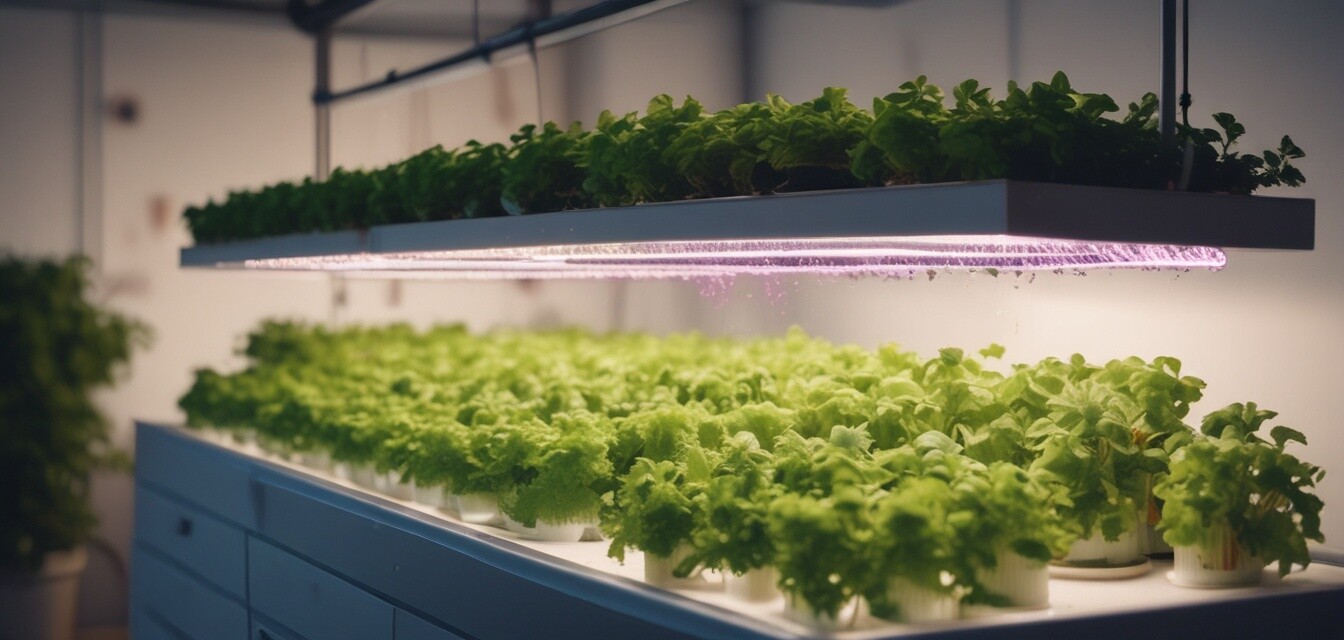
Setting Up a Hydroponic System for Herbs
Key Takeaways
- Understand the basics of hydroponic gardening.
- Choose the right system for growing herbs at home.
- Maintain optimal conditions for growth.
- Select suitable herbs to grow and understand their specific needs.
- Implement best practices for maintenance and harvest.
Hydroponic gardening is revolutionizing the way we grow plants, especially for herb enthusiasts. By setting up a hydroponic system at home, you can enjoy fresh herbs year-round, regardless of the season outside. This guide will provide you with all the essential steps to create a hydroponic garden specifically for herbs and ensure you cultivate vibrant, flavorful growth.
Understanding Hydroponics for Herbs
Hydroponics allows you to grow plants without soil by using a nutrient-rich water solution. This method promotes faster growth and higher yields, especially for herbs. If you're new to hydroponics, check out our buying guides for more information on the tools you’ll need.
Choosing the Right Hydroponic System
Selecting the right hydroponic system is crucial for successful herb gardening. Below are the most common systems and their benefits:
| Hydroponic System | Best For | Advantages |
|---|---|---|
| Nutrient Film Technique (NFT) | Leafy greens and small herbs | Efficient nutrient delivery, great for beginners |
| Deep Water Culture (DWC) | Fast-growing herbs like basil | Simple to set up and maintain, higher growth rates |
| Wick System | Small scale or indoor growing | No pumps required, easy to manage |
| Ebb and Flow System | Versatile herbs and vegetables | Flexible and robust for various plants |
Essential Components of Your Hydroponic System
Once you’ve picked a system, the following components are necessary to set up your hydroponic garden:
- Grow Lights: Essential for indoor growing, providing the necessary light spectrum.
- Pumps: For circulating water and nutrients throughout the system.
- Air Stones: To increase oxygen levels in the solution, critical for root health.
- Nutrient Solutions: Specific formulations designed for hydroponic growth.
- Grow Media: Options like rock wool or clay pellets that support plant roots.
Setting Up Your Hydroponic System
Here’s a step-by-step guide to set up your hydroponic system:
- Choose your hydroponic system and gather the necessary components.
- Set up the system according to the manufacturer's instructions.
- Fill your reservoir with water and add the nutrient solution.
- Use your grow lights to provide the necessary light exposure.
- Plant your herb seedlings or seeds in the chosen grow media.
- Monitor and adjust pH and nutrient levels regularly.
Best Herbs to Grow Hydroponically
Certain herbs thrive exceptionally well in hydroponic systems. Here are a few top picks:
- Basil: A must-have for many home cooks.
- Mint: Great for drinks and desserts.
- Cilantro: Excellent for savory dishes.
- Chives: Perfect for garnishing soups and salads.
- Parsley: Commonly used in various cuisines.
Maintaining Your Hydroponic System
Regular maintenance is vital for a successful hydroponic garden. Here are some tips to ensure your system remains in top shape:
Tips for System Maintenance
- Check water levels and top off regularly.
- Monitor nutrient levels weekly and adjust as needed.
- Inspect plants for any signs of pests or disease.
- Clean reservoir and components every few weeks.
Harvesting Your Herbs
When your herbs have reached the desired size, it’s time to harvest. Follow these tips for optimal harvesting:
- Harvest early in the day when flavors are most concentrated.
- Cut stems above a leaf node to promote new growth.
- Use clean scissors to prevent disease.
Conclusion
Setting up a hydroponic system for herbs can be an immensely rewarding experience. Not only do you get to enjoy fresh and flavorful herbs at your convenience, but it also allows you to connect with nature even in an urban setting. Follow this guide, and take advantage of our DIY projects to expand your hydroponic knowledge and skills.
Pros
- Year-round herb cultivation.
- Efficient use of space and resources.
- Quick growth and high yields.
Cons
- Initial setup costs can be higher.
- Requires regular monitoring and maintenance.

